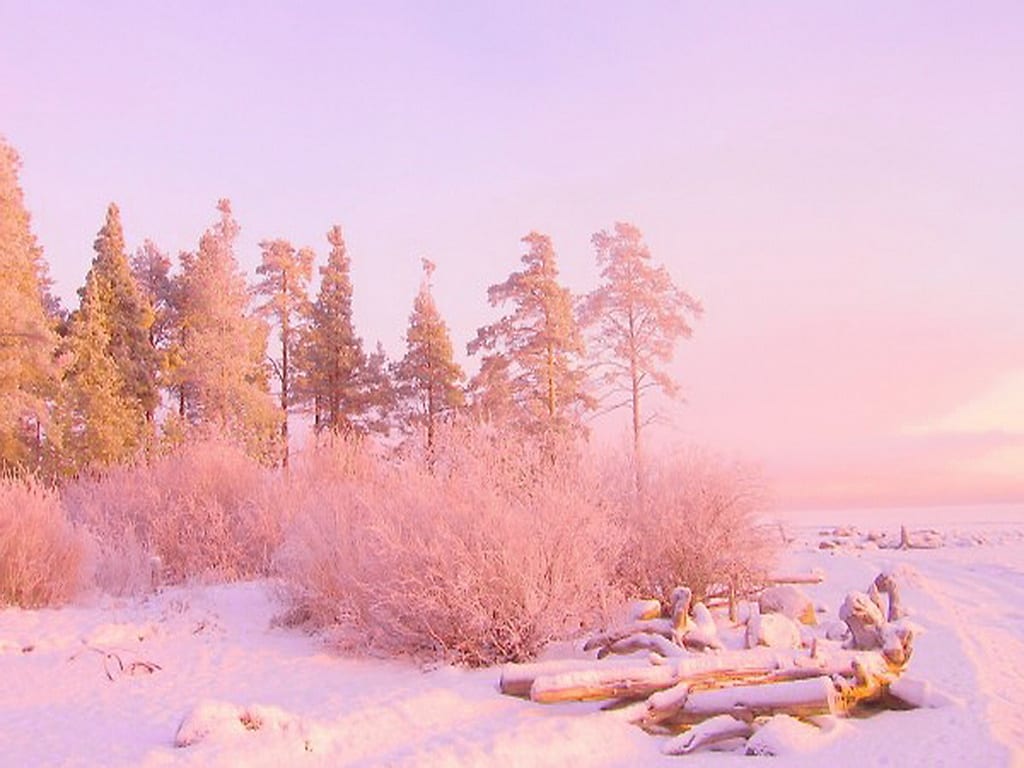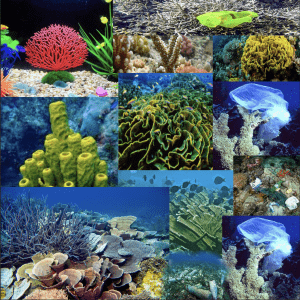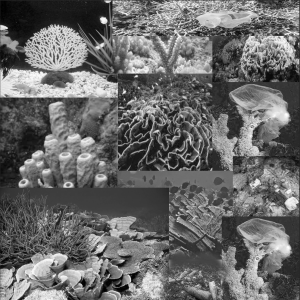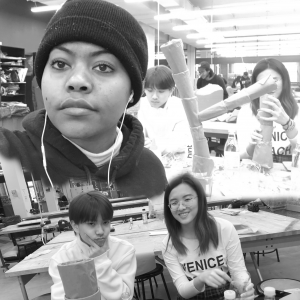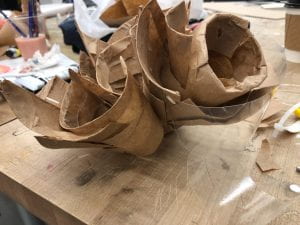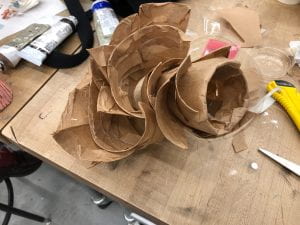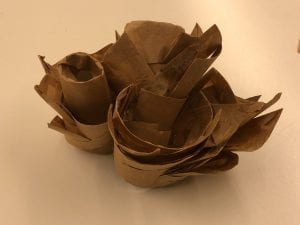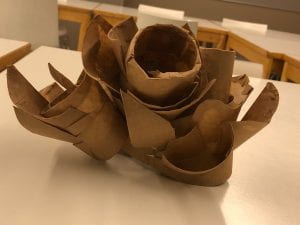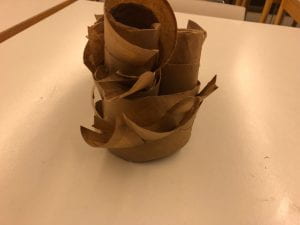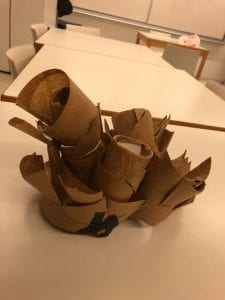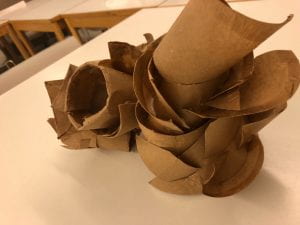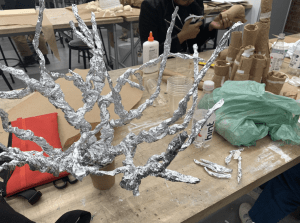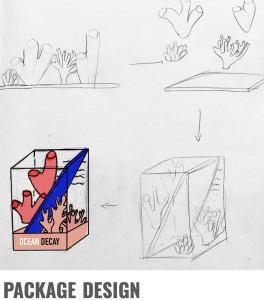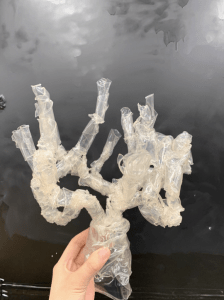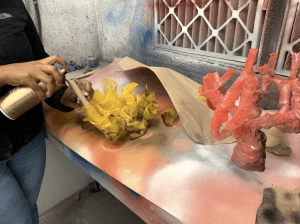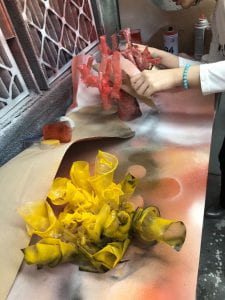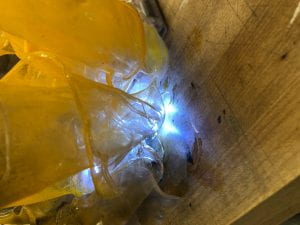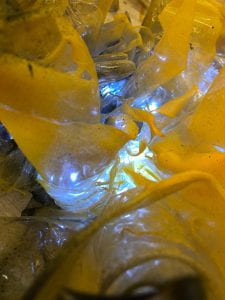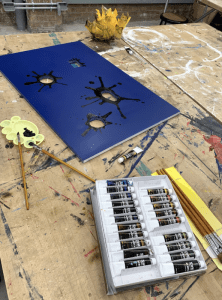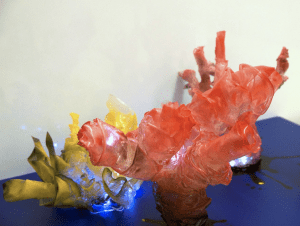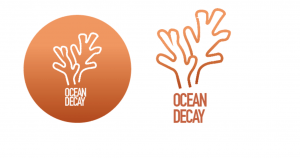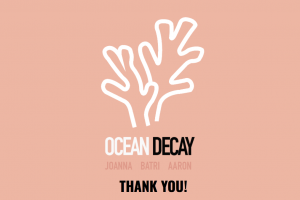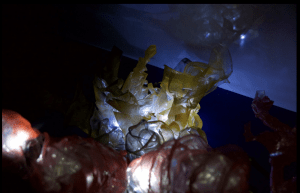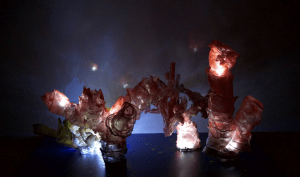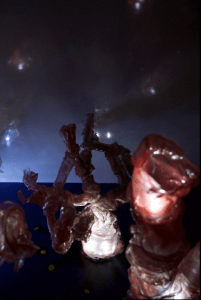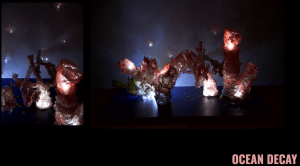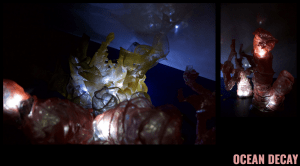Objective :
- Explore the ideas of how this installation helps a social interaction
- How light influence our mood and our surrounding.
- How can this installation can enhance the senses: touch, sound, smell, viewing, etc.
- Each group will be responsible for making a ‘light installation/art’ or a ‘chandelier’ made of several components.
- Each student will be responsible to create an independent light fixture that can function independently and be part of the overall group’s installation.
- Students can use an artificial light source or depend on the natural light.
- The installation must be modular and or collapsible.
- Design concept must take into consideration the principles of *Cradle-to-cradle design (C2C).
- Exploring the use of recycled and or upcycled materials (at least 50%)
- Each group will select an existing or imaginary location that will be the inspiration for using this installation.
Phase one:
- Whom are you designing this installation for? Any particular group? Space? Location?
- What is a chandelier? Look into the history of Eastern and Western evolution of lighting, what is the difference in the use? What materials or applications are used?
- What are the light installations/art installations? Examples from the design and art world, and what is unique about these examples?
Art installations are often three-dimensional creations that are set up in specific spaces that are incorporated or add to the story. There are all kinds of installations. For example, light installations. Light installation art is art that utilizes lighting as an essential part of the work. The discrepancy between art installations and art, in general, is the focus is no longer on an object or a single art piece but rather an entire space. Due to the fact, the installations are in certain space they are hard to experience because one has to be in the space to understand the meaning the work holds. Moreover, art installations are hard to sell. They don’t always serve the purpose of being an item but if they do it is a challenging endeavor to sell because often the work is site-specific. However, regardless of whether the installations are far away, they are something we should strive to go experience. Often the creators have special minds and interesting perspective and that’s shown in their creations.
Research
It is a widely known fact that humans and their reckless actions are taking its toll on this planet, especially on the ocean. The mysterious yet familiar grounds of the sea are facing the impacts of man’s selfishness, and it is causing waves of severe suffering across the organisms. One of the essential life forms of the oceans, the coral reefs, are dying rapidly; This will manifest in many other devasting deaths among sea creatures.
In the 19th Century, man starting playing with fire by breading all these materials that exhausted chemicals, that would then leak into the sea. Ever since humans have charged ahead utilizing far more resources than they had to; upsetting the health of innocent organisms. The”impacts from land-based sources of pollution—including coastal development, deforestation, agricultural runoff, and oil and chemical spills—can impede coral growth and reproduction, disrupt overall ecological function, and cause disease and mortality in sensitive species.”This alarming information is factual.
This needs to stop because the ocean can only bare so much. As smart, intelligent beings we need to do what’s right. Already, many issues are festering due to the wretched behavior of people. “Within the U.S., there are numerous locations where coral reef ecosystems area highly impacted by watershed alteration, runoff, and coastal development.” This quote implies that sea animals and perhaps, more importantly, life forces such as, corals reefs are going to die. Inevitably this reak it’s havoc on everything, even humans; which only provides reason to take action and rectify the problems we have offset.
Mood Board
Process Photos
Branding
Final Photos
Reflection
This group project was more difficult than I could predict. Due to the ubiquitous problem that comes with being in a group, communication, there was a lack of united passion for our goals.
Often I felt coerced into ideas that didn’t compel me and that carried through this project. I didn’t want to be difficult, so… I would comprise, but perhaps I became too complacent. I realized this when we ran into a massive obstacle where the project that we put hours into had to be reworked because it didn’t meet the needs of the assignment. Quite Frankly, I saw this coming, and maybe I should have done more to make sure we didn’t head into that direction.
At this given time though, where we were now a week and a half away from the due date, something interesting happened; we starting performing like a decent group. We started discussing and listening to one another. From the burden of the obstacle, we put our heads together and finally started conceiving ideas that would be beneficiary. Magic came of this, and we finished with a beautiful project. Although not perfect, it was well produced when considering the time crunch towards the end.


